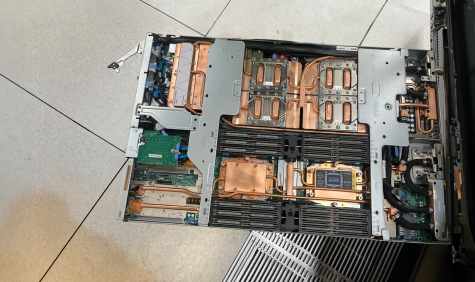Snellius Phase 3 node 4xH100 GPU
GPU expansion of supercomputer Snellius enables even faster data processing for Dutch researchers
The expansion includes the addition of 352 NVIDIA H100 (Hopper) GPUs (Graphic Procession Units) distributed across 88 nodes, and increases the theoretical performance of Snellius from 15 PFlop/s to nearly 38 PFlop/s. This allows Snellius to perform complex calculations even faster.
Even more computing power
NVIDIA's H100 GPUs are specifically designed to accelerate data processing for AI and machine learning (ML). Integrating more GPUs into Snellius increases the system's computing power, allowing researchers to process huge amounts of data faster and more efficiently. The expansion is timely as the number of research projects using AI and ML is growing rapidly. As a result, there is a shortage of GPU capacity. We are proud to have secured additional capacity for the Dutch research community.
Additional access to supercomputer LUMI
In addition to the expansion of Snellius, SURF also offers researchers in the Netherlands access to LUMI, Europe's most powerful supercomputer. Equipped with an extensive AMD GPU platform, LUMI delivers performance of up to 380 PFLOP PFlop/s. Researchers requiring computing power beyond the capabilities of Snellius are invited to make use of LUMI. With this comprehensive offering, SURF provides access to Europe's most powerful computing systems for a wide range of research challenges.
Details and access
As a National Supercomputer, Snellius supports Dutch researchers and research institutions with advanced computations, for example for environmental modelling. Funded by NWO, SURF and several research institutes, Snellius is available to all researchers who need large-scale computing power. The expansion is the very last upgrade; in a few years Snellius will be replaced by a new-generation supercomputer.
More information, including a virtual tour of Snellius, can be found on the Meet Snellius web page. Researchers interested in using the new capabilities of Snellius or LUMI can apply via NWO's computing time call. Depending on the size of the application, access will be arranged within a few weeks.
Find out how Henk Dijkstra, professor of Dynamical Oceanography at Utrecht University, uses Snellius:

